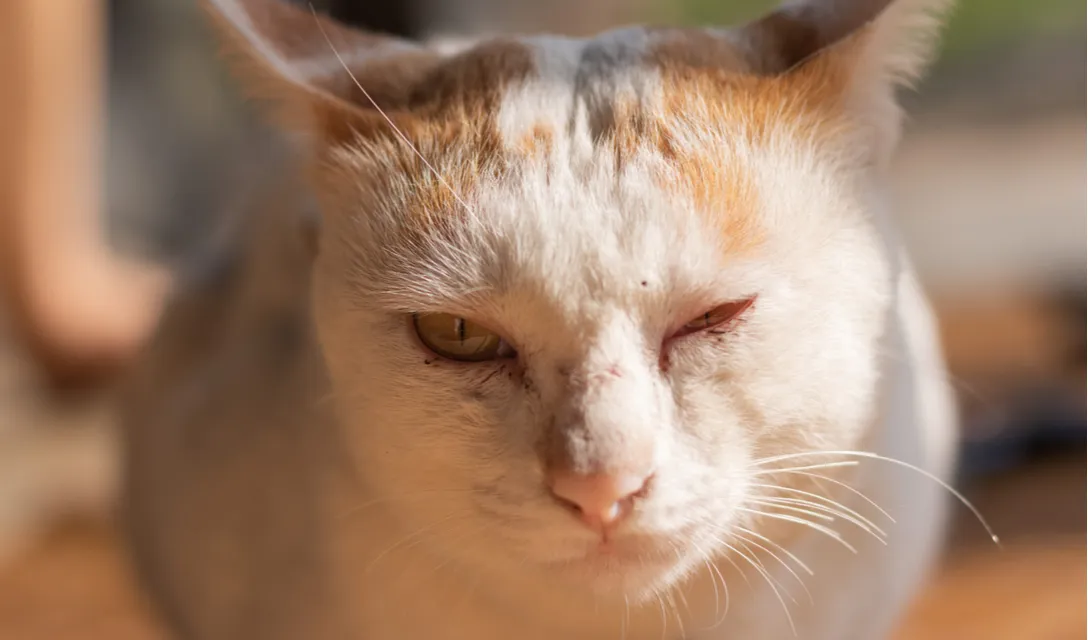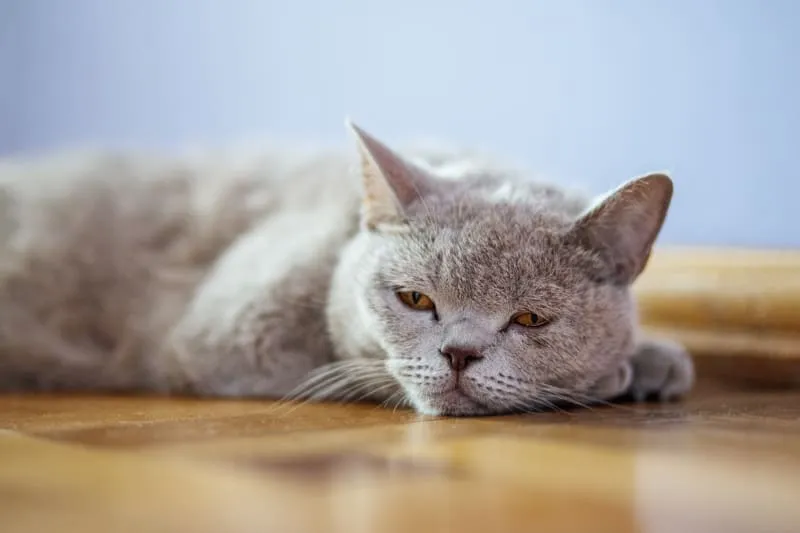Are you noticing some signs of worms in your cat’s eyes? Keep reading to know the several signs of worms in cats’ eyes and how to handle them.

Cats are known for their agility and curiosity, and sometimes often experience various health issues. One of the lesser-known concerns that can affect your cat is ocular worm infestation.
Understanding the signs and symptoms of worms in a cat’s eyes is crucial for the well-being of your pet.
As you keep on reading, we will provide insight into these signs and how to address them.
Signs of Worms in Cats Eyes

Ocular worms scientifically referred to as Thelazia, are a type of roundworm that infests the eyes of cats.
They are transmitted through various vectors, primarily via infected intermediate hosts, such as flies or other insects.
Also, these worms typically reside in the conjunctival sac or under the nictitating membrane, causing discomfort and potential health complications for the cat.
Here are clear signs of worms in cats:
1. Excessive Eyes Discharge From Your Cat
Cats infested with ocular worms often display increased tear production or eye discharge.
Furthermore, this eye discharge can manifest as watery eyes with continuous tearing.
Also, consultation with a veterinarian is crucial for proper diagnosis and treatment.
They might recommend deworming medications and further steps to alleviate discomfort.
2. Redness and Irritation in Your Cat’s Eyes
The presence of ocular worms in cats can lead to redness and irritation in the eye. Also, inflammation may cause the affected eye to appear red or swollen.
To address this, a vet might prescribe anti-parasitic medication or anti-inflammatory drugs to alleviate the inflammation.
3. Noticing Frequent Blinking or Squinting From Your Cat
Frequent blinking or squinting by the cat indicates discomfort due to ocular worm infestation.
In addition, it’s crucial to seek veterinary care to properly diagnose and treat the condition.
A vet might perform an eye examination to identify and remove the worms.
4. Visible Worms in Your Cat Eyes or Eyelid
In severe cases, actual worms might be visible in the eye or eyelid, or their movement might be observed.
This is a severe indicator of an infestation and requires immediate veterinary intervention.
Furthermore, a vet can remove the worms and administer appropriate medication to address the issue.
5. Noticing Your Cat Rubbing or Pawing at the Eyes
Ocular worm infestations can cause cats to exhibit behaviors such as rubbing their eyes against objects or pawing at their eyes due to the discomfort caused by the parasites.
If you notice this sign veterinary assistance is necessary to diagnose the issue and commence treatment promptly.
6. Cloudy or Hazy Appearance From Your Cats
Ocular worms can cause the affected eye to appear cloudy or hazy, indicating a problem that needs immediate attention.
A vet can conduct an eye examination to diagnose the issue and provide proper treatment.
7. Changes in the Eye Structure of Your Cat
Worms can lead to structural changes in the eye, altering its shape or appearance.
To handle this, an experienced veterinarian can diagnose and treat ocular worm infestation to alleviate these changes.
8. Noticing Diminished Vision or Blindness From Your Cat
If left untreated, severe ocular worm infestations can lead to diminished vision or blindness in the affected eye.
Immediate veterinary care is necessary to prevent or address this severe outcome.
How to Address Worm Infestation in Cats

If you suspect your cat may be experiencing ocular worm infestation, it’s essential to seek immediate veterinary care.
Treatment usually involves the administration of specialized medications to eliminate the worms from the eye and prevent further infestation.
1. Regular Veterinary Check-ups
Scheduled visits to the veterinarian can help detect potential health issues early on, including ocular worm infestation.
2. Maintaining Hygiene
Keeping your cat and its living environment clean can help prevent the spread of various parasites, including ocular worms.
3. Avoidance of Infected Areas
Preventing exposure to environments known for harboring infected insects can reduce the risk of ocular worm infestation.
In conclusion, worm infestation in cats is a concerning health issue that requires prompt attention and treatment.
Recognizing the signs and symptoms of this condition is crucial for early detection and swift action to ensure the well-being of your pet.
Related Searches:
